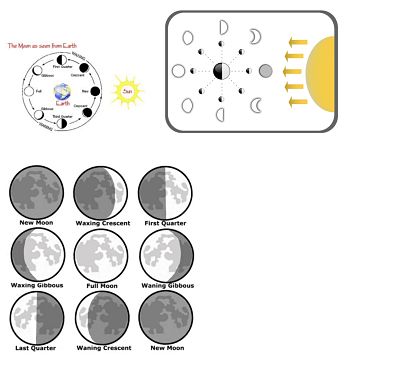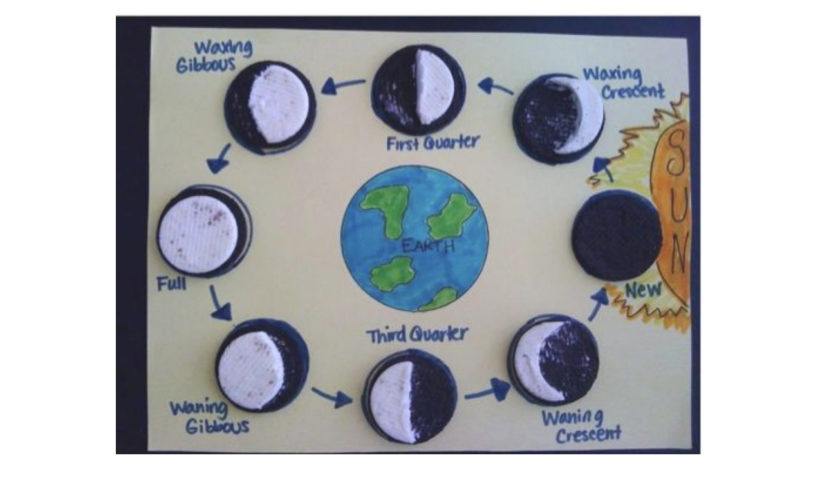One of our most popular learning objectives on the Legends platform is The Sun, Moon, and Stars: Patterns of Apparent Motion. Keep reading to find the Sun, Moon, and Stars lesson plan, and download it for free!
Sign up for free to access all the features available, for teachers, on Legends of Learning!
The Sun, Moon, and Stars Lesson Plan
Learning Objective: The Sun, Moon & Stars – Patterns Of Apparent Motion
NGSS Standard
MS-ESS1.A-1 Patterns of the apparent motion of the sun, the moon, and stars in the sky can be observed, described, predicted, and explained with models.
Objective
Students will be able to:
- Explain the locations of the Earth, moon and sun and describe their relationship
- Explain the movements of the Earth, moon and sun by developing models
- Explain the different phases of the moon by manipulating models
Time Required
90 minutes
Lesson Getting Ready
Materials Needed:
- Teacher computer with internet access and projector
- Student computers/laptops/tablets with internet access (preferably one per student but at least enough for small groups of 3 -4 students)
- Plastic spoons
- Oreo cookies (or a similar substitute)
- Black Sharpie pens and colored magic markers
- Construction paper
- Paper towels
Teacher Preparation
- Create a 10-minute assignment on Legends of Learning with the games found in The Sun, Moon and Stars: patterns of Apparent Motion. Example Apparent Motion: Orbital Command
- Create a 20-minute assignment on Legends of Learning with items found in “The Sun, Moon, and Stars: patterns of Apparent Motion”. Example: Sun Shooter
- Separate Oreo cookies, Sharpies, and plates for each group (at least 8 cookies per group)
Introduce Topic
Engage: 10 min
- The teacher will play the video “5F Sun, Earth Moon The Science Video”
- As students watch the video, they will write 3 or more new facts that they learned about the earth, moon, and sun in their science journal
- The teacher then leads a discussion about the video and the relationship between the sun, moon and Earth
- The teacher will instruct students to answer 3 questions from the video.
-
- How many days does it take for the moon to orbit Earth? (28 days)
- How many days does it take Earth to orbit the sun? (365 ¼ days)
- How many hours does it take for Earth to complete one rotation on its axis? (24 hours)
Explore: 10 min
- Students have to sign in to Legends of Learning and enter their teacher code.
- The teacher will send their students ther selected assignment.
- Students will complete Apparent Motion: Orbital Command as the teacher assists students as needed. Stopping gameplay to address the questions asked in the game may be needed.
Expand On The Lesson
Explain: 10 min
- The teacher will demonstrate the orbital and rotational relationship of the Earth, moon, and sun by having students in groups of three demonstrate this concept using their bodies to represent each celestial body. If there is limited room in the classroom, the teacher can simply demonstrate this with one group of three students by moving desks enough to clear a space large enough for the demonstration. Optimally, the teacher will be able to use hallway space so several groups can demonstrate this concept. Each group will get a sheet with the following diagram, which demonstrates the direction of rotation. (see Appendix A in the lesson plan)
- As students demonstrate the rotational movements, the teacher assists students as needed as well as pausing the activity to ask questions to assess knowledge.
-
- a. In which direction does the Earth rotate on its axis? Does the Earth rotate in the same direction as the Moon? or the Sun? i. The Earth rotates counter-clockwise on its axis. Yes, yes.
- b. Does the moon orbit around the Sun or the Earth? Why does the moon orbit where it does? i. The Moon orbits around the Earth. This is because of its proximity to the Earth. Although the Sun has a greater gravitational effect due to its size, the moon is close enough to the Earth so that it is caught in its gravitational pull.
- c. What is a solar eclipse and how does one form? i. A solar eclipse is when the sun is blocked, either partially or fully, by the moon. This occurs when the Moon’s orbit causes it to pass between the Earth and the Sun.
Elaborate & Evaluate

Elaborate: 40 min
- Students will separate into small groups (three or four)
- The teacher hands each group a zip-lock bag with at least 8 Oreo cookies and plastic spoon, a blank piece of construction paper, and markers.
- The teacher then hands each group a sheet with the following diagrams: (see Appendix B in the lesson plan)
- Using the information on these sheets, students will construct a moon phase chart on the construction paper using the Oreos with various amounts of icing scraped off to represent the various lunar phases. The cookies are then arranged in a linear fashion on the construction paper to mimic the eight phases of the moon. The markers will be used to draw representations of the sun, Earth, directional arrows, and titles of each lunar phase. A student example is provided below.

Evaluate: 20 min
-
- Launch Assignment 2 for students
- Students will play the game of their choice and be assessed on their ability to answer the questions provided in the game correctly.
- The teacher will analyze student results to determine what concepts need to be a focus for reteaching.
Possible Extension Activity
Have students participate in the World MOON Project, a globally collaborative project that allows students all over the world to observe and report on lunar phases. http://worldmoonproject.org/



